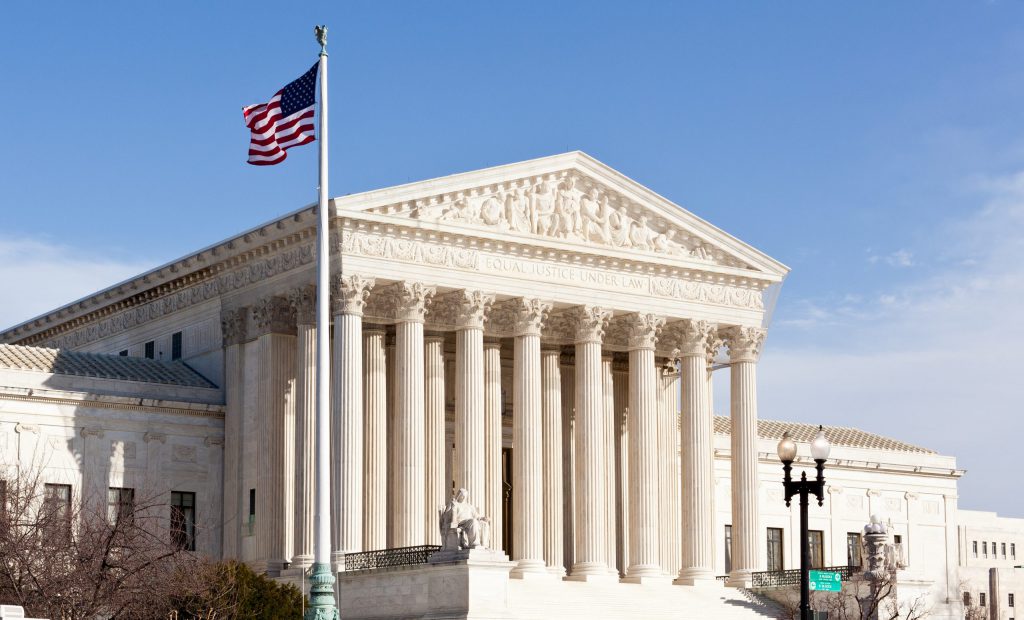Case could block Clean Air Act protections and drastically weaken the EPA’s ability to act on climate
This week, the U.S. Supreme Court heard oral arguments in West Virginia v. EPA, a lawsuit brought by coal industry interests aimed at stripping the EPA of its ability to fight the climate crisis. The outcome could severely curb the EPA’s authority to limit carbon emissions from power plants—just as the window to avert the worst impacts of climate change is beginning to close.
“The Court needs to see this lawsuit for what it is: a last-ditch effort to breathe life into an outdated, uneconomic and unsustainable industry that’s run its course,” says Clean Wisconsin General Counsel Katie Nekola. “The Court must recognize that regulating carbon emissions is squarely in EPA’s wheelhouse and the agency has the authority to create a strong rule that will help us work together to stop the worst impacts of climate change while we still can.”
The case centers around the Clean Power Plan, an EPA rule put into place by the Obama Administration that set the first ever limits on carbon emissions from power plants. The rule never took effect and was quickly repealed and replaced by the Trump Administration with its own, far weaker Affordable Clean Energy rule. In 2020, Clean Wisconsin and other environmental groups filed suit over the new rule and won.
“We sued saying Trump’s EPA didn’t have a legal reason to repeal Obama’s Clean Power Plan and that the rule that replaced it didn’t meet requirements. The D.C. Circuit Court of Appeals agreed the rule was not adequate, and they threw it out,” Nekola says.
Now, even though no rule is in place, petitioners representing the coal industry and several states are appealing the circuit court decision and asking the Supreme Court to weigh-in on any future rule created by the EPA.
“They’re looking for what amounts to an advisory opinion from the Supreme Court. And some of the justices may be willing to do that and say, ‘This is what EPA can and can’t do in the next rule,’ Nekola explains. She notes that utilities have already met the goals set in Obama’s Clean Power Plan, even though it was never implemented.
“Electric utilities have been shifting to renewable sources for economic reasons for years, and that shift will only accelerate, as we’re seeing in Wisconsin. We are transitioning to clean energy to reduce carbon, but not nearly fast enough,” she says.
Clean Wisconsin is working with its partner groups to litigate this important case and filed a brief with the U.S. Supreme Court last month.
“The EPA is gearing up right now to draft this new rule, but they’re waiting to see what the Supreme Court says about how narrow their authority should be,” says Nekola. “We need a strong rule. We need it to go a lot farther than any previous rule has gone.”
Nekola points out that oral arguments began on the same day the Intergovernmental Panel on Climate Change issued its latest report showing that climate change is already wreaking havoc in every corner of the world.
“If there was ever any doubt that climate change is real, that time has passed. Every summer thousands of acres of western forests burn, leaving entire towns leveled and people homeless. Summer in Wisconsin has become like summer in St. Louis, relentlessly hot for weeks on end. Catastrophic storms in the south and east are more violent and damaging every year,” Nekola says. “We need a really strong rule this time. We need much more aggressive goals, and we want utilities to be able to have a lot of flexibility under the rule to be able to meet those goals.”

